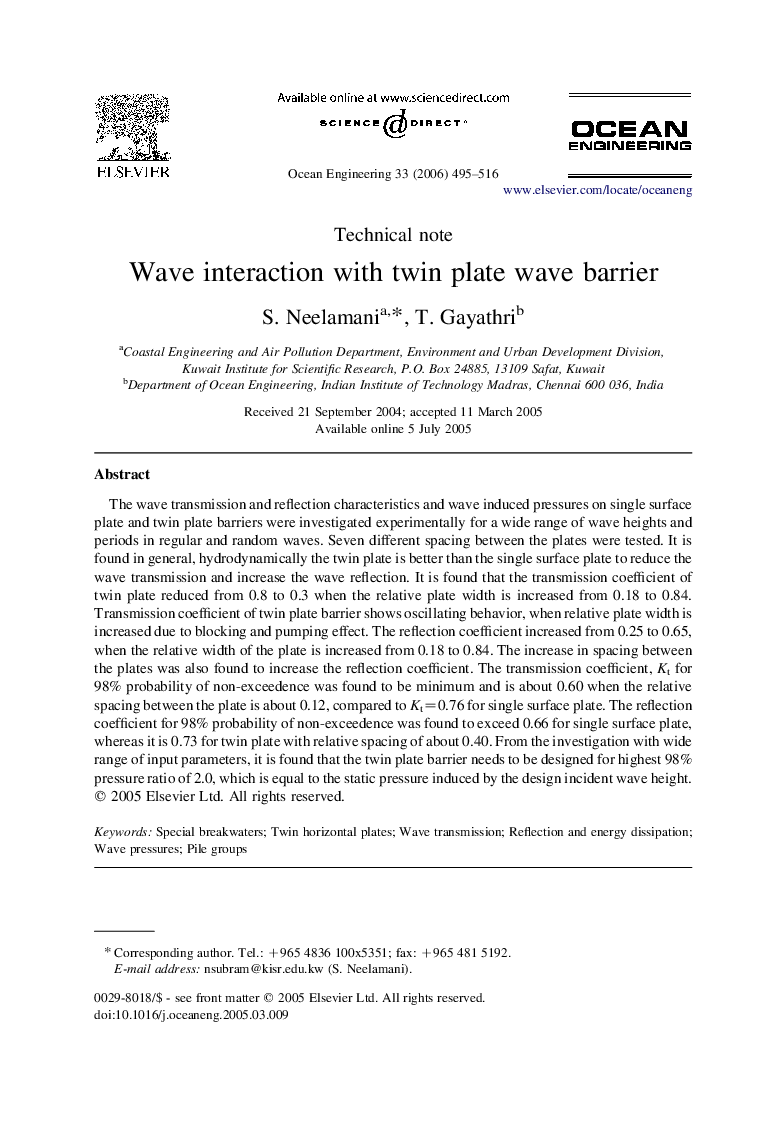| Article ID | Journal | Published Year | Pages | File Type |
|---|---|---|---|---|
| 1727069 | Ocean Engineering | 2006 | 22 Pages |
The wave transmission and reflection characteristics and wave induced pressures on single surface plate and twin plate barriers were investigated experimentally for a wide range of wave heights and periods in regular and random waves. Seven different spacing between the plates were tested. It is found in general, hydrodynamically the twin plate is better than the single surface plate to reduce the wave transmission and increase the wave reflection. It is found that the transmission coefficient of twin plate reduced from 0.8 to 0.3 when the relative plate width is increased from 0.18 to 0.84. Transmission coefficient of twin plate barrier shows oscillating behavior, when relative plate width is increased due to blocking and pumping effect. The reflection coefficient increased from 0.25 to 0.65, when the relative width of the plate is increased from 0.18 to 0.84. The increase in spacing between the plates was also found to increase the reflection coefficient. The transmission coefficient, Kt for 98% probability of non-exceedence was found to be minimum and is about 0.60 when the relative spacing between the plate is about 0.12, compared to Kt=0.76 for single surface plate. The reflection coefficient for 98% probability of non-exceedence was found to exceed 0.66 for single surface plate, whereas it is 0.73 for twin plate with relative spacing of about 0.40. From the investigation with wide range of input parameters, it is found that the twin plate barrier needs to be designed for highest 98% pressure ratio of 2.0, which is equal to the static pressure induced by the design incident wave height.
